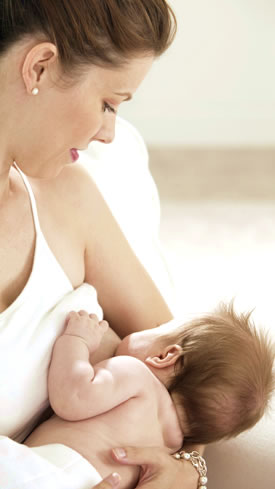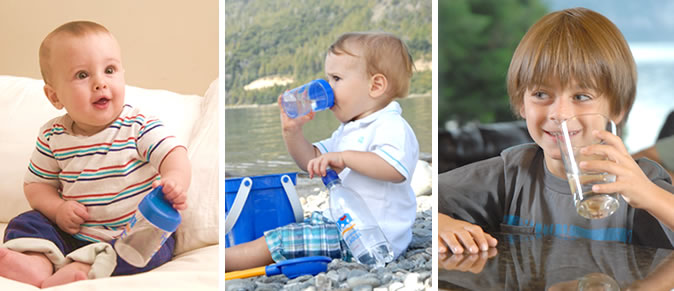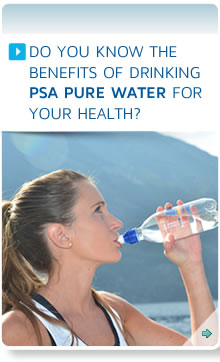Water and breastfeeding and children

WATER AND BREASTFEEDING

Since a baby is in a mother's belly, he/she is already immersed in an aquatic medium. When the baby is born, he/she is breastfed with breast milk, which is made up of 90% of water. This breast milk satisfies the hungry and the thirsty sensations. That’s why it is essential that the mother drinks at least 2 litres of water per day.
The 83% of the body of a little child is made up of water. Just as the child is growing, the percentage of water in the body decreases, until it reaches to a 60% in adult men, and to a 45% in adult women.
While a baby is fed with breast milk only, he/she usually doesn’t need any other extra liquids; there are some exceptions, as for example, in cases of extreme hot or losses increased by fever and diarrhoea.
As of six month, the infant is ready to introduce food complimentary to the breast milk in his/her diet. At this moment, due to there is a bigger renal charge of solutes, it is necessary to frequently provide water, now that the water obtained through the breast milk or other food is not enough.
Children need to drink more water than adults to avoid dehydration. Given that it is hard to different the need to satisfy hungry or thirsty in the baby, the intake of water has to be constantly controlled.
WATER AND CHILDREN
Childhood is the stage where habits are acquired. That’s why it is important to create those that allow them to have a healthy life from there on. A child’s body is made up of 50-60% of water, and his/her hydration is essential to perform metabolic processes.
Water and milk are the only drinks suitable for school-age children. It is not only important what they drink, but also how much they do. Dehydration can cause disorders like lack of attention and concentration in the child.
At night the saliva production decreases, so it is important that children don't eat or drink anything, apart from water, after brushing their teeth and before going to sleep.


 Argentina
Argentina Bolivia
Bolivia Chile
Chile Colombia
Colombia Ecuador
Ecuador España
España Paraguay
Paraguay Perú
Perú Uruguay
Uruguay



English version